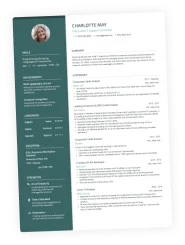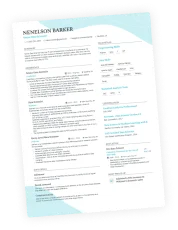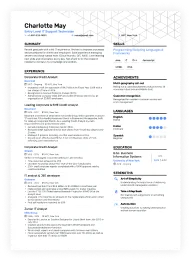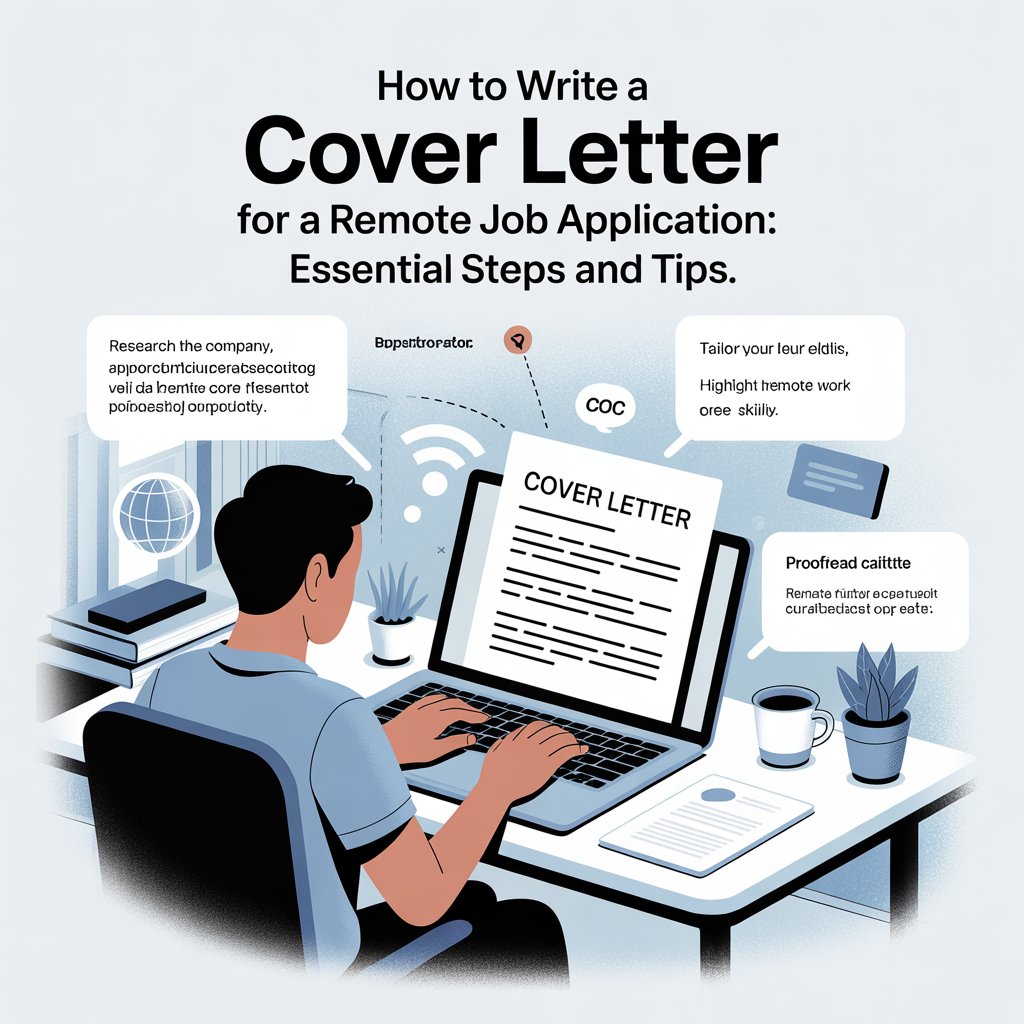Writing a cover letter for a data analyst position can seem tricky, but it doesn’t have to be. In 2025, it’s more important than ever to make your application stand out. A well-crafted cover letter can highlight your skills and show employers why you’re the right fit for their team. This guide will help you navigate through the essential elements of a winning cover letter data analyst, ensuring you grab the attention of hiring managers and increase your chances of landing an interview.
Key Takeaways
- A cover letter is crucial for making a strong first impression on employers.
- Tailoring your cover letter for each job application shows genuine interest and effort.
- Highlight specific skills and achievements to demonstrate your value as a candidate.
- Avoid common mistakes like generic content and spelling errors to maintain professionalism.
- Utilize templates as a starting point, but make sure to customize them to reflect your unique experiences.
Understanding The Importance Of A Cover Letter Data Analyst
Why A Cover Letter Matters
Okay, so you’re probably thinking, “Do I really need a cover letter?” when applying for data analyst jobs. The short answer is: yes, absolutely. Think of it as your chance to show some personality and connect the dots between your resume and the specific job. It’s where you explain why you’re the right fit, not just what you’ve done. A cover letter lets you highlight your passion and enthusiasm, things that a resume can’t always convey. It’s a chance to make a human connection.
How It Complements Your Resume
Your resume is like a data dump of your skills and experience. It’s factual, concise, and lists everything you’ve accomplished. A cover letter, on the other hand, is where you add context and tell a story. It’s where you explain how you used those skills and why they matter to the company you’re applying to. It’s not just repeating your resume; it’s expanding on it. Think of it as the narrative that brings your resume to life. For example, you can mention your data analytics courses and how they helped you.
First Impressions Count
In the competitive world of data analytics, first impressions are huge. Your cover letter is often the first thing a hiring manager reads, and it sets the tone for everything that follows. A well-written cover letter shows that you’re serious about the job, that you’ve taken the time to understand the company, and that you have the communication skills needed to succeed in a data-driven role. Mess it up, and you might not even get your resume looked at. It’s your chance to grab their attention and make them want to learn more about you.
A strong cover letter demonstrates your understanding of the company’s needs and how your skills can address them. It’s not just about what you want; it’s about what you can offer.
Key Components Of A Data Analyst Cover Letter
Essential Elements To Include
Okay, so you’re staring at a blank page, ready to write a cover letter. What absolutely needs to be in there? Think of it like this: your cover letter is a sales pitch, and you’re selling you. At the top, make sure you have a professional heading with your contact information. Then, a proper greeting – try to find the hiring manager’s name! The body should highlight your skills and experience, and don’t forget a strong closing. It’s like a checklist for success. Make sure to include your contact details at the top.
- Your Contact Information
- A Professional Greeting
- Quantifiable Achievements
Structuring Your Cover Letter
How you lay out your cover letter matters. A well-structured letter is easy to read and highlights the most important information. Start with a compelling introduction that grabs the reader’s attention. Follow with body paragraphs that detail your skills and experience, and end with a strong conclusion that reiterates your interest and encourages them to contact you. Think of it as a story with a clear beginning, middle, and end. It’s important to have a clear structure to showcase your data analyst skills.
- Introduction: Hook the reader immediately.
- Body Paragraphs: Detail your skills and experience with examples.
- Conclusion: Reiterate interest and call to action.
Common Mistakes To Avoid
There are some common pitfalls to watch out for. Sending a generic cover letter is a big no-no. It shows you haven’t put in the effort to research the company or tailor your application. Spelling and grammar errors are also a major turn-off. And avoid being too vague – be specific about your skills and accomplishments. It’s like showing up to a job interview unprepared. Don’t forget to proofread for grammar errors.
A common mistake is not tailoring your cover letter to the specific job. Always research the company and customize your letter to show how your skills and experience align with their needs.
- Generic Content
- Spelling and Grammar Errors
- Lack of Specificity
Crafting A Compelling Introduction
Hooking The Reader
Okay, so you’re staring at a blank page, right? The intro is everything. It’s gotta grab them. Think of it like this: you’re not just applying for a job; you’re selling yourself. Start with something that makes the hiring manager sit up and take notice. Don’t be boring! Instead of “I’m applying for the Data Analyst position,” try something like, “Driven by a passion for transforming raw data into actionable insights, I was thrilled to see the opening for a Data Analyst at [Company Name].” See? Way more engaging. You want to show right away that you’re not just another applicant; you’re someone who gets excited about data. Make sure to mention the job title you’re applying for.
Stating Your Intentions
Alright, now that you’ve got their attention, be clear about why you’re writing. State the position you’re applying for and where you saw the job posting. This part is straightforward, but don’t skip it! It shows you’re organized and know what you want. For example:
- “I am writing to express my interest in the Data Analyst position advertised on LinkedIn.”
- “Having followed [Company Name]’s innovative work in data science, I am eager to apply for the Data Analyst role.”
- “With great enthusiasm, I submit my application for the Data Analyst position, as advertised on your company website.”
It’s important to be direct and to-the-point. Hiring managers are busy people, and they appreciate clarity. Don’t bury the lede; make it obvious why you’re contacting them.
Highlighting Your Passion
This is where you let your personality shine. Why are you passionate about data analysis? What gets you excited about digging into datasets and finding patterns? Share a brief anecdote or a specific skill that showcases your enthusiasm. Maybe you automated a reporting process that saved your previous company a ton of time, or perhaps you built a cool data visualization that revealed a hidden trend. Whatever it is, make it real and make it you. Show them you’re not just looking for a job; you’re looking for a place to use your skills and make a difference.
Here’s a little table to help you think about it:
| Passion Area | Example |
|---|---|
| Data Visualization | “I’m fascinated by the power of Tableau to transform complex data into easily understandable visuals.” |
| Statistical Analysis | “I enjoy using statistical methods to uncover hidden patterns and trends in large datasets.” |
| Machine Learning | “I’m excited about the potential of machine learning to solve real-world problems.” |
Showcasing Your Data Skills Effectively
Identifying Relevant Skills
To really make your cover letter shine, you need to pinpoint the skills that matter most to the specific job you’re after. Don’t just list everything you know; instead, carefully read the job description and identify the key skills and qualifications they’re seeking. Then, focus on highlighting those specific skills in your cover letter. This shows the employer that you’ve taken the time to understand their needs and that you’re a good fit for the role. For example, if the job description emphasizes experience with cloud computing, make sure to highlight your cloud computing skills and any relevant projects or accomplishments.
Quantifying Your Achievements
Numbers speak louder than words. Instead of just saying you’re good at something, prove it with data. Did you improve efficiency by a certain percentage? Did you reduce costs by a specific amount? Use concrete numbers and metrics to demonstrate the impact of your skills and experience. This makes your claims more credible and shows the employer that you can deliver results. Quantifying your achievements helps the hiring manager understand the real-world value you bring to the table.
For example:
| Skill | Achievement |
|---|---|
| Data Analysis | Increased sales by 15% through data analysis |
| SQL | Reduced query time by 20% using SQL optimization |
| Data Visualization | Improved report clarity, reducing meeting times by 10% |
Aligning Skills With Job Requirements
It’s not enough to just list your skills and achievements; you need to connect them directly to the job requirements. Explain how your skills and experience will help you succeed in the role and contribute to the company’s goals. This shows the employer that you understand their needs and that you’re confident in your ability to meet them. Make sure to tailor your cover letter to each job you apply for, highlighting the skills and experiences that are most relevant to that particular position. By aligning your skills with the job requirements, you demonstrate that you are a strong candidate and that you have the necessary data analyst skills to excel in the role.
Think of your cover letter as a bridge connecting your skills and experience to the employer’s needs. Show them how you can solve their problems and contribute to their success. This is your chance to make a compelling case for why you’re the best candidate for the job.
Tailoring Your Cover Letter For Each Application
Researching The Company
Before you even think about writing, do your homework. Really dig into the company. What are their values? What projects have they been working on? What’s their mission statement? All of this information is usually available on their website, in press releases, or on their social media. Understanding the company’s culture and goals will allow you to frame your skills and experience in a way that resonates with them. It’s not just about showing you have the skills; it’s about showing you understand how those skills can benefit them.
Customizing Content
Generic cover letters are a one-way ticket to the rejection pile. Each cover letter should be tailored to the specific job description and company. This means highlighting the skills and experiences that are most relevant to the position. Don’t just list your qualifications; explain how you’ve used those qualifications to achieve results. Use the same language as the job description to show that you understand what they’re looking for. If they emphasize “data visualization,” talk about your experience with Tableau or Power BI. If they mention “statistical modeling,” highlight your proficiency with R or Python. Make it clear that you’re not just sending out the same cover letter to every company.
Demonstrating Cultural Fit
It’s not enough to just have the right skills; you also need to be a good fit for the company’s culture. This can be a bit trickier to demonstrate, but it’s important. Research the company’s values and try to reflect those values in your cover letter. For example, if the company emphasizes teamwork, talk about your experience working in collaborative environments. If they value innovation, highlight your experience with developing new solutions. Showing that you understand and align with their culture will make you a more attractive candidate. Remember to craft an effective cover letter that speaks directly to the employer’s needs.
Tailoring your cover letter shows that you’ve taken the time to understand the company and the role, and that you’re genuinely interested in the opportunity. It’s a small investment of time that can pay off big in the long run.
Here’s a simple breakdown:
- Read the job description carefully: Identify the key skills and qualifications they’re looking for.
- Research the company: Understand their values, mission, and culture.
- Customize your cover letter: Highlight the skills and experiences that are most relevant to the position and company.
Writing A Strong Closing Statement
Encouraging Further Communication
Your closing statement is your final chance to make a lasting impression. It’s not just about saying goodbye; it’s about prompting the hiring manager to take the next step. Clearly state your eagerness to discuss the opportunity further and suggest a specific action, like scheduling an interview. This shows you’re proactive and genuinely interested in the role. Don’t be passive; take the initiative to move the process forward. For example, you might say, “I am eager to discuss how my skills in data visualization and statistical analysis can contribute to your team’s success and am available for an interview at your earliest convenience.”
Expressing Gratitude
Always end your cover letter by expressing sincere gratitude for the hiring manager’s time and consideration. A simple “Thank you for your time and consideration” goes a long way in showing respect and professionalism. It’s a small gesture, but it demonstrates that you value their effort in reviewing your application. Remember, politeness and courtesy are always appreciated, and they can set you apart from other candidates. It reinforces a positive impression and leaves the reader with a good feeling about you as a potential employee.
Reiterating Your Interest
Before signing off, briefly reiterate your strong interest in the data analyst position and the company. This reinforces your enthusiasm and reminds the hiring manager why you’re a good fit. Keep it concise and focused on the value you can bring to the organization. Avoid simply repeating what you’ve already said; instead, try to summarize your key qualifications and how they align with the company’s goals. For instance, you could say, “I am confident that my analytical skills and experience in data mining make me a strong candidate for this role, and I am excited about the opportunity to contribute to [Company Name]’s success.”
A strong closing statement should leave the hiring manager with a clear understanding of your interest, gratitude, and the value you bring. It’s your final opportunity to make a compelling case for why you should be considered for the data analyst position.
Here’s a list of things to keep in mind:
- Be confident, not arrogant.
- Be specific, not generic.
- Be professional, not casual.
Utilizing Templates For Your Cover Letter
Benefits Of Using Templates
Cover letter templates can be a real timesaver. Instead of staring at a blank page, you have a pre-formatted document ready to be customized. This can be especially helpful if you’re applying for multiple positions and need to create several cover letters quickly. Templates also ensure you include all the necessary sections, like your contact information, the date, and a proper closing. They can also guide you in terms of structure and length, helping you create a professional-looking document. Using a template can help you focus on the content rather than the formatting, which can be a big stress reliever. It’s a great way to get started, especially if you’re not confident in your writing skills. Think of it as a framework that you can build upon to showcase your unique qualifications and experience. Using a template can also help you avoid common formatting errors that can make your cover letter look unprofessional. For example, a template can ensure that your margins are consistent, your font is readable, and your spacing is correct. This can make a big difference in how your cover letter is received by the hiring manager. Using a template can also help you stay organized and focused on the key elements of a successful cover letter. By providing a clear structure and format, templates can help you avoid rambling or including irrelevant information. This can make your cover letter more concise and impactful, increasing your chances of getting an interview. Remember to always tailor the template to your specific needs and the requirements of the job you’re applying for. A template is just a starting point, and it’s important to make it your own.
Where To Find Quality Templates
Finding good cover letter templates is easier than you might think. Microsoft Word has a bunch of built-in templates that are pretty decent. Just open Word, click “New,” and search for “cover letter.” You’ll see a variety of options. Websites like Coursera also offer templates and guides. LinkedIn is another great resource; many career experts share templates there. Also, don’t forget about career services at local universities or community colleges. They often have resources available to students and alumni, including cover letter templates. When choosing a template, make sure it looks professional and is easy to read. Avoid anything too flashy or cluttered. The goal is to make your qualifications stand out, not the design of the template. It’s also a good idea to check out a few different templates before settling on one. This will give you a better sense of what’s out there and what works best for you. Remember, the best template is one that you can easily customize to fit your specific needs and the requirements of the job you’re applying for. So, take your time, do your research, and choose a template that will help you create a winning cover letter.
Customizing Templates For Personal Use
Okay, so you’ve found a template. Great! Now, don’t just fill in the blanks and call it a day. You need to customize it to make it your own. First, make sure your contact information is accurate and up-to-date. Then, tailor the content to match the specific job you’re applying for. Don’t just copy and paste from your resume; instead, highlight the skills and experiences that are most relevant to the position. Use the same keywords that are used in the job description. This will help your cover letter get past applicant tracking systems (ATS). Also, be sure to proofread carefully for any errors in grammar or spelling. A single mistake can make you look unprofessional. Finally, consider adding a personal touch to your cover letter. This could be a brief anecdote about a relevant experience or a statement about why you’re passionate about the company. The goal is to make your cover letter stand out from the crowd and show the hiring manager that you’re genuinely interested in the job. Remember, a template is just a starting point. It’s up to you to make it your own and create a cover letter that truly reflects your unique qualifications and experience. For example, you can use a cover letter example as a starting point.
Customizing a template is key. Don’t just fill in the blanks; make it reflect your unique skills and experiences. Tailor it to the specific job and company, and always proofread carefully.
Common Cover Letter Mistakes To Avoid
Generic Content
It’s easy to fall into the trap of using a generic cover letter template for every application, but this is a big mistake. Employers can spot a generic letter a mile away, and it shows a lack of effort and genuine interest. Instead, take the time to tailor your cover letter to each specific job and company. This means researching the company, understanding their needs, and highlighting how your skills and experience align with their specific requirements. A personalized cover letter demonstrates that you’ve taken the time to understand the company and are genuinely interested in the position.
Spelling And Grammar Errors
Nothing screams unprofessionalism like spelling and grammar errors. Even minor mistakes can make a negative impression and suggest a lack of attention to detail. Always proofread your cover letter carefully before submitting it. It can be helpful to ask a friend or colleague to review it as well, as a fresh pair of eyes can often catch errors that you might have missed. Consider using grammar and spell-checking tools, but don’t rely on them entirely. These tools can sometimes miss contextual errors, so it’s important to review your cover letter manually.
Lack Of Specificity
Avoid vague statements and generalities. Instead, provide specific examples of your accomplishments and how you’ve used your skills to achieve results. Quantify your achievements whenever possible to demonstrate the impact you’ve made. For example, instead of saying “I improved data analysis processes,” say “I streamlined data analysis processes, resulting in a 15% reduction in processing time.” Being specific makes your claims more credible and helps you stand out from other candidates. Always tailor your cover letter to the specific job and company requirements.
A well-written cover letter is your chance to make a strong first impression. It’s worth the time and effort to avoid these common mistakes and create a compelling document that showcases your skills and experience.
Examples Of Successful Data Analyst Cover Letters
Entry-Level Cover Letter Example
Crafting an entry-level cover letter can feel like a hurdle, especially when you lack extensive professional experience. The trick is to highlight academic projects, internships, or even part-time jobs where you utilized data analysis skills. Quantify your achievements whenever possible. For example:
- “Improved data accuracy by 15% through rigorous data cleaning in a university research project.”
- “Developed a predictive model during an internship that increased lead generation by 10%.”
- “Automated data entry processes, saving the team 5 hours per week.”
Even without direct professional experience, you can showcase your potential by emphasizing your analytical abilities, problem-solving skills, and eagerness to learn. Remember to tailor your letter to the specific requirements of the job description.
Experienced Professional Cover Letter Example
For seasoned data analysts, the cover letter is your chance to showcase your impact and expertise. Instead of just listing your skills, focus on how you’ve used them to drive business results. Consider this:
- “Led a data-driven initiative that increased sales by 20% in Q4.”
- “Developed a new customer segmentation model that improved marketing campaign effectiveness by 25%.”
- “Reduced operational costs by 15% through the implementation of a predictive maintenance system.”
Here’s a sample table:
| Project | Outcome |
|---|---|
| Customer Churn Prediction | Reduced churn rate by 10%, saving the company $50,000 annually. |
| Sales Forecasting | Improved forecast accuracy by 15%, leading to better inventory management. |
| Fraud Detection | Identified and prevented $20,000 in fraudulent transactions. |
Focus on the specific achievements that align with the target company’s needs. Don’t just say you’re good at data analysis; prove it with concrete examples.
Industry-Specific Cover Letter Example
Tailoring your cover letter to the specific industry is vital. A cover letter for a healthcare data analyst role will look different from one for a finance position. For example, if applying to a healthcare company, you might highlight experience with:
- Analyzing patient data to improve treatment outcomes.
- Developing predictive models to identify high-risk patients.
- Using data to optimize hospital operations and reduce costs.
Understanding the industry’s unique challenges and opportunities is key. Demonstrate that you’re not just a data analyst, but a data analyst who understands their business. Show that you understand the importance of keywords in the industry and how your skills can address their specific needs. For example, in finance, you might emphasize experience with risk management, fraud detection, or algorithmic trading. In healthcare, you might focus on patient outcomes, clinical trials, or healthcare economics. Remember to research the company thoroughly and tailor your cover letter to their specific needs and priorities. A well-crafted cover letter can significantly increase your chances of landing an interview.
Best Practices For Writing A Data Analyst Cover Letter
Keeping It Concise
Your cover letter should be straightforward and to the point. Recruiters often have limited time, so brevity is key. Aim for a single page that highlights your most relevant skills and experiences. Avoid unnecessary jargon or lengthy explanations. Think of it as a concise sales pitch, showcasing why you’re the ideal candidate without overwhelming the reader.
Using Professional Language
Maintain a formal and professional tone throughout your cover letter. Avoid slang, colloquialisms, or overly casual language. Use proper grammar and spelling, and proofread carefully before submitting. Your writing should reflect your attention to detail and commitment to quality, which are essential traits for a data analyst. This is your chance to show you can communicate clearly and effectively, a skill that’s in high demand in the field.
Highlighting Relevant Experience
Focus on experiences and skills that directly align with the job description. Don’t just list your qualifications; explain how you’ve used them to achieve results. Quantify your accomplishments whenever possible, using numbers and metrics to demonstrate your impact. For example, instead of saying “Improved data analysis processes,” say “Improved data analysis processes, resulting in a 15% reduction in processing time.” This shows you understand the importance of data analyst cover letter and can deliver tangible value.
Remember, your cover letter is an opportunity to tell a story about your career and how it relates to the specific role you’re applying for. Make it engaging, informative, and tailored to the company’s needs.
Here are some key areas to focus on:
- Technical Skills: Highlight your proficiency in programming languages (e.g., Python, R), statistical software (e.g., SAS, SPSS), and database management systems (e.g., SQL, NoSQL).
- Analytical Skills: Showcase your ability to analyze complex data sets, identify trends, and draw meaningful insights.
- Communication Skills: Demonstrate your ability to communicate technical findings to both technical and non-technical audiences.
Consider this table for structuring your accomplishments:
| Skill | Project | Result |
|---|---|---|
| Data Analysis | Customer Churn Prediction | Reduced churn rate by 10% through targeted marketing campaigns. |
| Data Modeling | Sales Forecasting Model | Improved forecast accuracy by 15%, leading to better inventory management. |
| Data Visualization | Interactive Dashboard for Executive Team | Provided real-time insights, enabling faster and more informed decisions. |
The Role Of Keywords In Your Cover Letter
Keywords aren’t just buzzwords. They guide both machines and humans to see you as a match for a role.
Importance Of Keywords
When you send off your cover letter, an applicant system often scans it before a real person looks it over. Just like you need a compelling opening to grab attention, weaving in the right terms makes sure your letter isn’t tossed aside.
- They boost your chances of passing the initial scan.
- They show you read the ad and grasp what the employer wants.
- They tie your background to the role in plain sight.
Keywords help your cover letter stand out in automated scans and catch the reader’s attention.
How To Identify Relevant Keywords
Finding the right words takes a few simple steps. You don’t need fancy tools—just your eyes and a highlighter.
- Read through the job ad and note repeated terms.
- Compare them to your own skills and experiences.
- Check the company’s site or reports for its lingo and priorities.
- Match your transferable skills to the role’s needs.
A well-chosen word can be the bridge between your resume and the interview room.
Incorporating Keywords Naturally
You want your letter to flow, not feel forced. Slip keywords into stories about what you’ve done.
- Use them in win stories: for example, describe how you used “SQL” or “Python” to solve a problem.
- Put them in context: don’t just list “data visualization”—show how you made a dashboard.
- Vary your phrasing: swap “data cleaning” for “data prep” or “data quality checks.”
Here’s a quick look at how to drop in a couple of terms:
| Keyword | Sample Sentence |
|---|---|
| SQL | I wrote SQL queries that trimmed our report time by 40%. |
| data visualization | I built dashboards in Tableau to guide team decisions. |
By mixing these terms into real examples, your cover letter stays clear and honest.
Next Steps After Submitting Your Cover Letter
So, you’ve poured your heart and soul into crafting the perfect cover letter, tailored it to the specific data analyst position, and finally hit that ‘submit’ button. What happens now? The waiting game begins, but it’s not a passive one. Here’s what you should be doing after sending in your application.
Following Up With Employers
Following up is a delicate art. You want to show your continued interest without becoming a nuisance. A good rule of thumb is to wait about a week to ten days after the application deadline before sending a follow-up email. Keep your email concise and professional, reiterating your enthusiasm for the role and briefly highlighting your key qualifications. Make sure to reference the specific job title and date you applied. It’s also a good idea to check your application status online, if the company provides a portal for that. Remember, patience is key here.
Preparing For Interviews
While you’re waiting to hear back, now is the perfect time to brush up on your technical skills and prepare for potential interview questions. Review common data analysis concepts, practice coding challenges, and think about how you would approach different analytical problems. Also, revisit the job description and identify the key skills and experiences the employer is looking for. Prepare specific examples from your past work that demonstrate how you possess those qualities. This proactive approach will help you feel more confident and prepared when you finally get that interview call. Don’t forget to research the company thoroughly – understand their mission, values, and recent projects. This shows that you’re genuinely interested in working for them.
Continuing Your Job Search
It’s important to remember that the job search is a numbers game. Don’t put all your eggs in one basket. While you’re waiting to hear back from one employer, continue to apply for other data analyst positions that align with your skills and experience. This will not only increase your chances of landing a job but also help you refine your cover letter and interview skills. Keep track of all the jobs you’ve applied for, including the date of application, the job title, and the contact information of the hiring manager. This will help you stay organized and avoid accidentally applying for the same job twice. Also, consider networking with other data professionals in your field. Attend industry events, join online communities, and reach out to people in your network for informational interviews. You never know where your next opportunity might come from. Remember to check out resources for following up on job applications.
The job search can be a challenging and sometimes discouraging process. It’s important to stay positive, persistent, and proactive. Don’t be afraid to ask for help from your network, career counselors, or mentors. And remember, every rejection is an opportunity to learn and grow.
Here’s a simple table to help you track your applications:
| Company | Job Title | Date Applied | Follow-Up Date | Status |
|---|---|---|---|---|
| Example Corp | Data Analyst | 2025-05-01 | 2025-05-10 | Awaiting Response |
| Beta Industries | Junior Analyst | 2025-05-05 | 2025-05-15 | Interview Scheduled |
| Gamma Solutions | Data Scientist | 2025-05-08 | 2025-05-18 | Rejected |
It’s all about staying active and keeping your options open!
After you send in your cover letter, it’s time to take the next steps. Make sure to follow up with the employer if you don’t hear back in a week or two. This shows your interest and can help you stand out. Also, keep applying to other jobs while you wait. For more tips on how to boost your job search, visit our website and see how RoboApply can help you get hired faster!
Wrapping It Up
In conclusion, writing a strong cover letter for a data analyst position is key to getting noticed in a competitive job market. Keep it short and to the point, focusing on your relevant skills and experiences. Tailor each letter to the job you’re applying for, showing that you understand the company’s needs. Highlight your achievements and how they relate to the role. Remember, your cover letter is your chance to tell your story and make a personal connection with the hiring manager. So, take your time, be genuine, and don’t hesitate to ask for feedback from others before you hit send. Good luck!
Frequently Asked Questions
What is the purpose of a cover letter for a data analyst job?
A cover letter helps you introduce yourself to the employer and explain why you are a good fit for the data analyst position. It shows your interest and gives you a chance to highlight your skills.
How long should my cover letter be?
Your cover letter should be no longer than one page. Keep it brief and to the point to make it easy for the hiring manager to read.
What should I include in my cover letter?
Include your contact information, a greeting, an engaging introduction, details about your skills and achievements, and a strong closing statement.
Why is it important to customize my cover letter for each job application?
Customizing your cover letter shows that you understand the company and the role. It makes your application stand out and shows your enthusiasm for the job.
What are some common mistakes to avoid in a cover letter?
Avoid using generic content, making spelling or grammar mistakes, and failing to be specific about your skills and experiences.
Can I use a template for my cover letter?
Yes, using a template can help you structure your cover letter. Just make sure to personalize it for each job you apply for.
How can I make my cover letter more appealing?
Make your cover letter engaging by starting with a strong introduction, using clear language, and showcasing your passion for data analysis.
What should I do after submitting my cover letter?
After submitting your cover letter, consider following up with the employer to express your continued interest and prepare for potential interviews.












